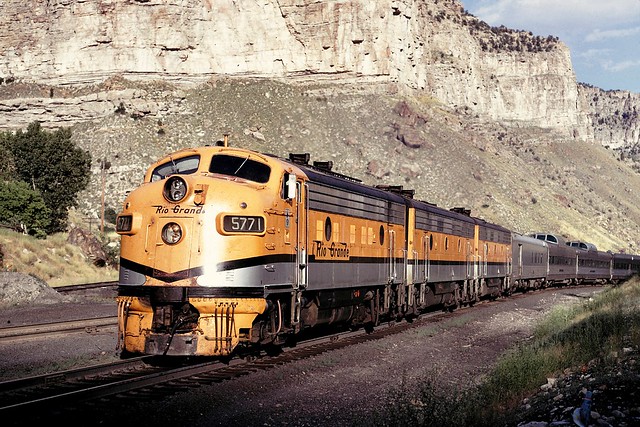Every once in a while, an e-mail from the contact form catches my eye, like this one:
Dear Colorado Railroads,
Wasn't there a line running generally SE from Longmont, CO, generally thru Erie, then past Broomfield? If so, what became of it?
Regards,
Gregory Iwan
Dear Gregory,

Yes, there was! In fact, this area is steeped in the history of numerous railroads because the Front Range corridor between Denver and Cheyenne was the first to see development by railroads, and all of them wanted to be the first to get to wherever it was they were going! The period of 1870 to 1890 was a wild time here, with legal and financial wrangling, a great deal of courting of public opinion, strong arming, and more than a few shady dealings like kidnapping judges and taking of property by force!
I must admit that when I was initially searching, I was confused. I came across a narrow-gauge line running due north from Broomfield to Longmont. But you aren't referring to that line. The only line with all three points you mentioned was standard gauge and, strangely, it was built by the same company as the narrow gauge line! Suffice to say, this railroad has a complex, if brief, history.
The Denver, Utah & Pacific had narrow-gauge aspirations as a mountain railroad, and its ambitions were as big as its name. However, its progress seems a little more mundane. The first goal was to lay claim to a route west through the canyons and that's where their line through Longmont comes in. They were working on reaching Lyons and a potential route west over the Continental Divide. This appears to have caught the attention of the Chicago Burlington and Quincy Railroad. The CB&Q was also looking to expand westward of Denver and bought control of the DU&P. Because the CB&Q was a standard gauge carrier, the DU&P began converting or flat out re-building its system to match the Burlington's gauge.
The line was constructed in 1889 from Burns Junction on the Denver, Marshall & Boulder main line a little west of Broomfield by the Denver, Utah & Pacific in standard gauge. To save time and money, DU&P used 5 miles
of a grade built by the Denver, Western & Pacific but not actually used. Once complete, they leased the line to the Chicago, Burlington & Quincy Railroad on September 1st of that year. CB&Q operated the railroad via its Burlington & Missouri River Railroad in Nebraska (phew!) subsidiary until February 1908, when the title was obtained by CB&Q outright.
The line connected through Erie with Longmont's branch to Lyons, which had to be standard gauged along with the connection to Denver, but the Burlington would eventually link it with Montana by controlling the Colorado & Southern whose Wind River Canyon line through Casper and Thermopolis, Wyoming.
Map
The line itself served many mines that came and went, but coal mining was curtailed by miners strikes in the late 1910s and early 20s, and the mines waned in profitability. Most of the spurs were gone by 1936 and passenger traffic also dwindled. Then in 1951, 1.5 miles of the main line between the connections with the Lafayette Loop was abandoned, diverting all traffic over the loop. From then until 1970, the line remained intact, more or less.
What became of it? As near as I can piece together, vandals burnt the bridge at Idaho Creek, severing the line. Rather than rebuild it, the Burlington Northern (I presume, based on corporate timelines) elected to serve Lafayette and Longmont via their other connections made by the control and eventual merger with the Colorado & Southern. Erie lost service in the 1980s or 90s. It's vague and unsubstantiated, but that's the best I can come up with at this time.
For a serious look at the line, I managed to find a book available in Denver's Public Library called
Denver, Longmont and Northwestern by Berlyn (Billy) L. Boyles of the Rocky Mountain Railroad Club. I have not seen a copy of it myself but it looks promising, if a bit dated.
It's a little surprising to find this ghost railroad hiding in plain sight, running right through people's backyards. Who knows how much more history lies beneath the surface?⚒
References
Colorado Railroads by Tivis Wilkins
Tracking Ghost Railroads in Colorado by Robert Ormes
Colorado's Mountain Railroads by Robert LaMassena
Historical USGS Topo Maps
Rick Steel C&S History, UtahRails.net

 As a follow up to my previous post from April 26, it's worth noting that the Colorado Railroad Museum in Golden is conducting a symposium on the weekend of June 7-9 on the Transcontinental Railroad.
As a follow up to my previous post from April 26, it's worth noting that the Colorado Railroad Museum in Golden is conducting a symposium on the weekend of June 7-9 on the Transcontinental Railroad.









